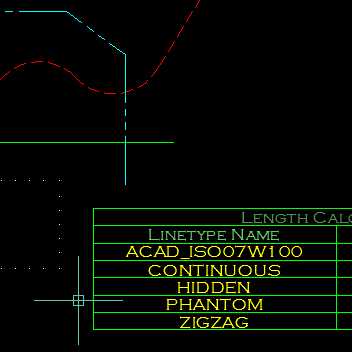Search the Community
Showing results for tags 'calculate'.
-
Version 1.7.0
3,690 downloads
This program will calculate the total length of Lines/Polylines/LWPolylines/Arcs/Ellipses/Circles/Splines with an optional filter. The Filter may be used to select only those lines that are on a certain layer, or perhaps have a certain linetype or colour. The results of the calculation can... -

LISP to calculate the slope between two elevations in a plan view
Jaru posted a topic in AutoLISP, Visual LISP & DCL
Hello everyone in the forum, thank you in advance for the help you can give me. Ok this is the situation: I've a LISP, that calculates the slopes in a plan view or in the model, and works very well, but i need some changes adapted to this task. I'll try to explain my best. 1.... -

Addition in commandline while in command
3dwannab posted a topic in The CUI, Hatches, Linetypes, Scripts & Macros
Hi all, Is this possible. I was wanting to say stretch a wall in brick dimensions so would it be possible to type the equivalent of '225*9' (which doesn't work) while in the stretch command to give me the correct value every time. Would be a huge time saver at the moment. Even via lisp or an...- 18 replies
-
Hi guys, I have a requirement to create a block with a few attributes, but the attributes require a bit of composition behind the scenes. Here's an abstract example. I need a block that represents a computer's identity. Each computer has 2 references that need to result in attributes that I...
-
HELLO AGAIN CADTutor! I have a problem of weather of not you can change the accuracy of the calculation of areas in AutoCAD 2011. In my line of work, we need to find the areas to exact precision, though it seems that my AutoCad is messing with the calculations and rounding up. E.G AREA...
-
Can ACAD figure out the angle to put a line of specific length between parallel lines
Craigers posted a topic in AutoCAD Beginners' Area
I hope I can explain this simply enough: I am drawing a diagram to describe a mathematical word problem. Since it is easier to visualize with a drawing, I want to draw it using the given dimensions. But angles used in the diagram are unknown and are not needed for the answer to be calculated, s...- 10 replies
-
- coordinates
- calculate
-
(and 1 more)
Tagged with:
-
Is it possible to input an arithmetic expression (like 0.7*24) when a command asks for input value? For example during offset command. I thought it is possible to use calculator command inside a command but there was no success.
- 15 replies



